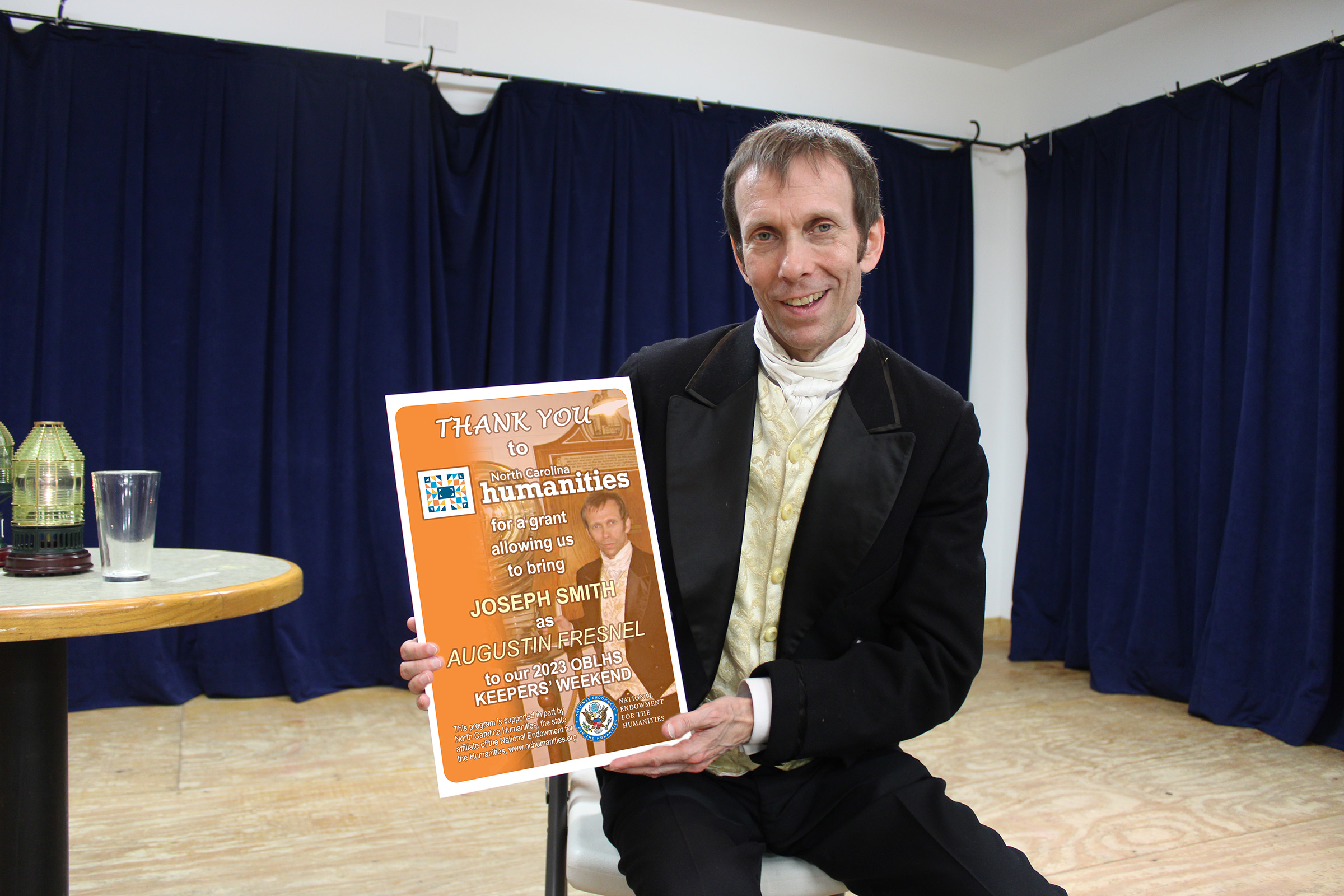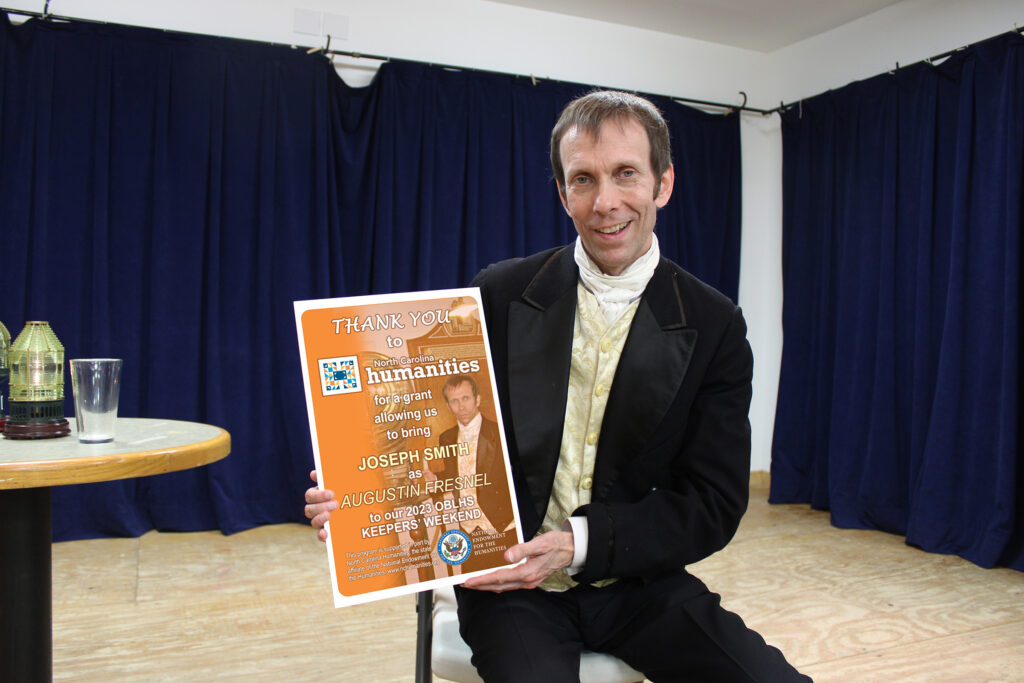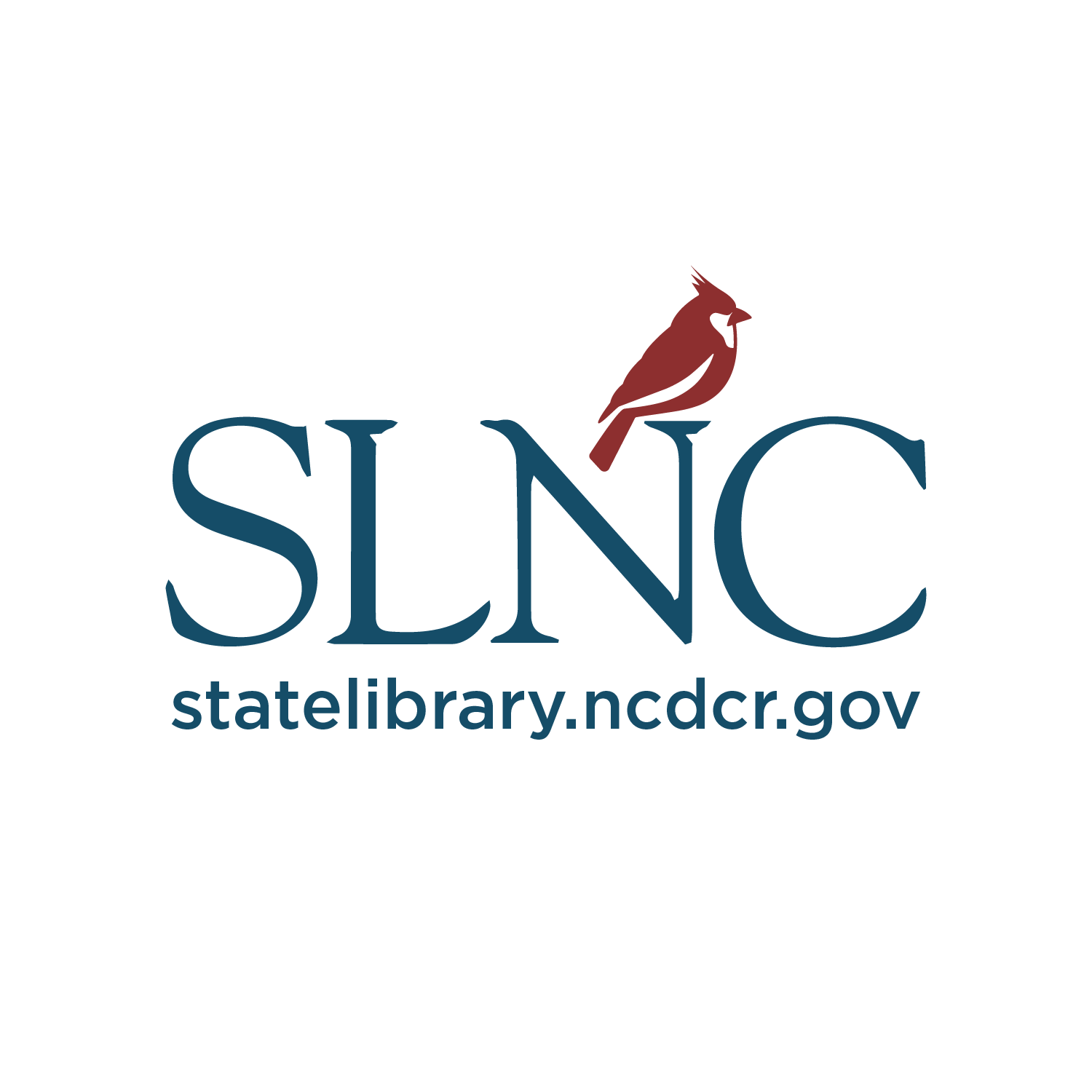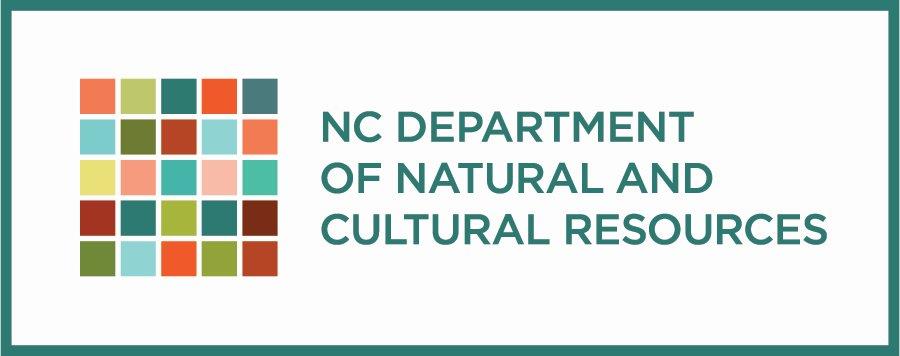Lighthouses are synonymous with North Carolina summer vacations. Look at any “to-do” beach trip list, and visiting a coastal lighthouse will surely be among the many great attractions North Carolina has to offer tourists and locals.
Many people visit these lighthouses from across the county for their design aesthetic, historical significance, and mystique. For all these reasons and more, the Outer Banks Lighthouse Society helps to keep North Carolina’s lighthouses shining.
In 2023, the Outer Banks Lighthouse Society received a North Carolina Humanities grant to help bring a living history presentation about the inventor of the Fresnel lens, Augustin Fresnel, to Ocracoke and the surrounding community. The presentation, given by historical reenactor Joseph Smith, illuminated Fresnel’s work and 200 years of Ocracoke Lighthouse history.
We connected with Bett Padgett, President of the Outer Banks Lighthouse Society, to learn more about North Carolina lighthouses, and why keeping local history alive is important.
Tell us about the Outer Banks Lighthouse Society. How did you get involved?
Bett: The organization was formed in 1994 by Cheryl and Bruce Roberts. Bruce passed away about a month ago. Bruce was interested in photography and was starting to focus on lighthouses. As they stopped by Cape Hatteras Lighthouse and Bodie Island Lighthouse, they were disappointed at the condition. Feeling that something needed to done to save these lighthouses, they moved to Kill Devil Hills and opened up a little gallery gift shop. On occasion, they would ask customers, “Would you be interested in helping bring attention to and restoring these two lighthouses?” That’s how the Society began; a group of passionate people interested in a local cause. My involvement began in 1997 when I wrote a song about the Cape Hatteras Lighthouse. At the time there was an uproar about what was going to happen to Cape Hatteras Lighthouse. Are we going to let it fall into the ocean? Are we going to relocate it? When writing the song, I did a lot of research, and it brought me to the Outer Banks Lighthouse Society, who were advocates of relocating the lighthouse. I was too. When I contacted the Society, they suggested I send my song to the local NPR stations across our state to help bring attention to the lighthouse. I thought, “That’s a great idea!” So that’s how I first got involved and subsequently became the president some years later. Today, the Outer Banks Lighthouse Society advocates for all the lighthouses in North Carolina and we have members from all over the U.S.
 Why are lighthouses important to North Carolina? What makes a lighthouse unique?
Why are lighthouses important to North Carolina? What makes a lighthouse unique?
Bett: The first lighthouse in North Carolina was Old Baldy Lighthouse, built in the 1700’s. At that time, there was a great need for lighthouses, especially in the Outer Banks region, because of the shoals, which are mountains of sand underneath the water that move around. It’s hard for a ship to know where these shoals are, so lighthouses help guide ships away from these areas. There are 11 lighthouses in North Carolina. Some are replicas. There are five coastal lighthouses: Currituck Beach Lighthouse, Bodie Island Lighthouse, Cape Hatteras Lighthouse, Cape Lookout Lighthouse, and Oak Island Lighthouse. There are two harbor lighthouses, Ocracoke Lighthouse and Old Baldy Lighthouse, and there are three riverlights, Roanoke River Lighthouse in Plymouth, Roanoke River Lighthouse in Colonial Park, and Roanoke Marshes Lighthouse in Manteo. We also have a lesser-known lighthouse, a range light, called Price’s Creek Range Light. It’s in Southport and is on private property. The height, shape, lighting mechanism, and strength of light helps to distinguish each lighthouse so that people can get safely to where they need to go.
 Tell us about the recent Augustin Fresnel Living History presentation.
Tell us about the recent Augustin Fresnel Living History presentation.
Bett: Thanks to a North Carlina Humanities grant, we brought historical reenactor Joseph Smith to Ocracoke Community Center. Joseph’s reenactment of Augustin Fresnel was aimed at helping their community have a better understanding and appreciation of the Ocracoke Lighthouse and the lighting mechanism. The presentation was held in celebration of Ocracoke Lighthouse’s 200th birthday. Thanks to a local community member doing their own research, we later learned that while the lighthouse was built in 1823, it was not lit until August of 1824! We were so happy to share this new information with the community at the same time as we were having our presentation. Joseph’s performance was fascinating, and what we call “edutainment”, a combination of educational and entertaining. Joseph suggested that we contact NC Humanities to see if we would be eligible for a grant – and we were. We would not have been able to host this presentation if it had not been for NC Humanities. During the presentation, the community learned that Augustin Fresnel was an inventor and physicist born in the early 1800’s, and his specialty was optics. Fresnel invented this new type of lens that would boost the signal of a light 20 miles or more out to sea. It saved numerous lives. His technology is not just for lighthouses though. The lenses are also used in airports, theatrical stage lighting, and more. After the presentation, people of the community came away with a better understanding of their local lighthouse and how it works.
Why are the humanities, local history, and culture important?
Bett: The humanities help keep our stories alive. Although you might tell stories to your great-grandchildren, they might not get published or widely shared for the public to benefit from. Groups like the Outer Banks Lighthouse Society and NC Humanities are helping keep these stories alive so that more people can know about what has happened and is happening in their community. I love that the Outer Banks Lighthouse Society educates folks about their local lighthouses and at the same time learns from the community. Hearing people share their stories about these iconic lighthouses is a win-win for all of us.
How can people support the Outer Banks Lighthouse Society?
Bett: Please donate or become a member! You can learn more about our advocacy efforts, public events, or make a donation at: https://www.outerbankslighthousesociety.org/. Next year we will be involved in several hands-on projects including the restoration of the Cape Hatteras Lighthouse! It is going to be restored to the original appearance and landscaping of 1870. There are parts of the current lighthouse which are missing, and beautiful decorative parts have fallen off or were removed. An iron fence, which is identical to the iron fence around the White House, is going to be restored. The Society will be there throughout the three-year process.
About North Carolina Humanities’ Grantee Spotlights: NC Humanities’ Grantee Spotlights shine a light on the incredible work of our grantee partners, offering details about their funded project, and feature a Q&A with a team member(s) associated with the organization.
This interview has been edited for length and clarity.









